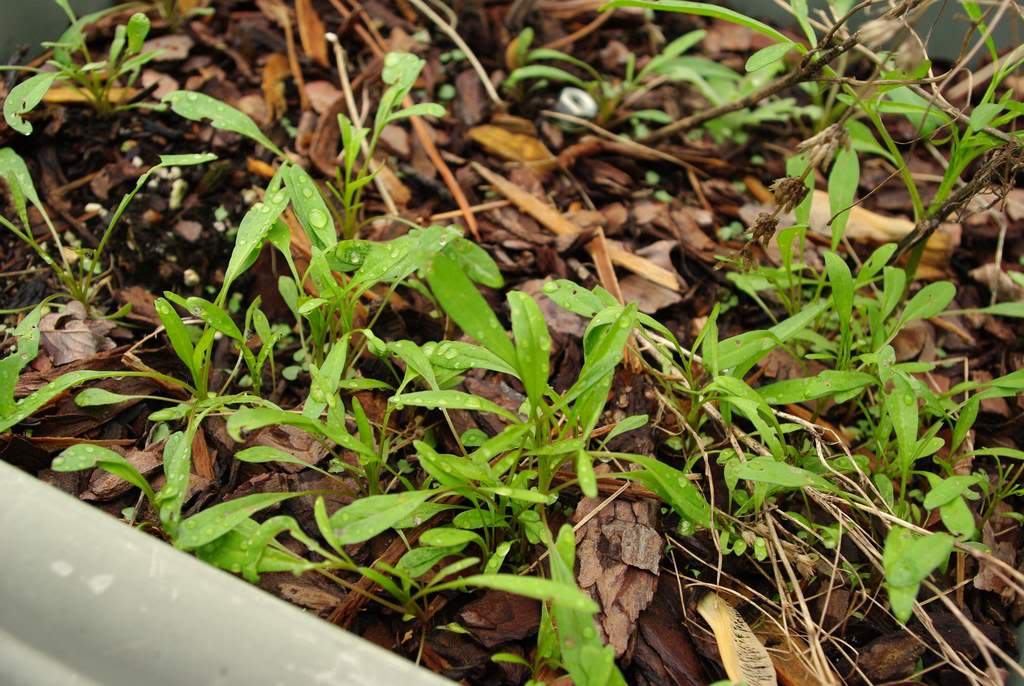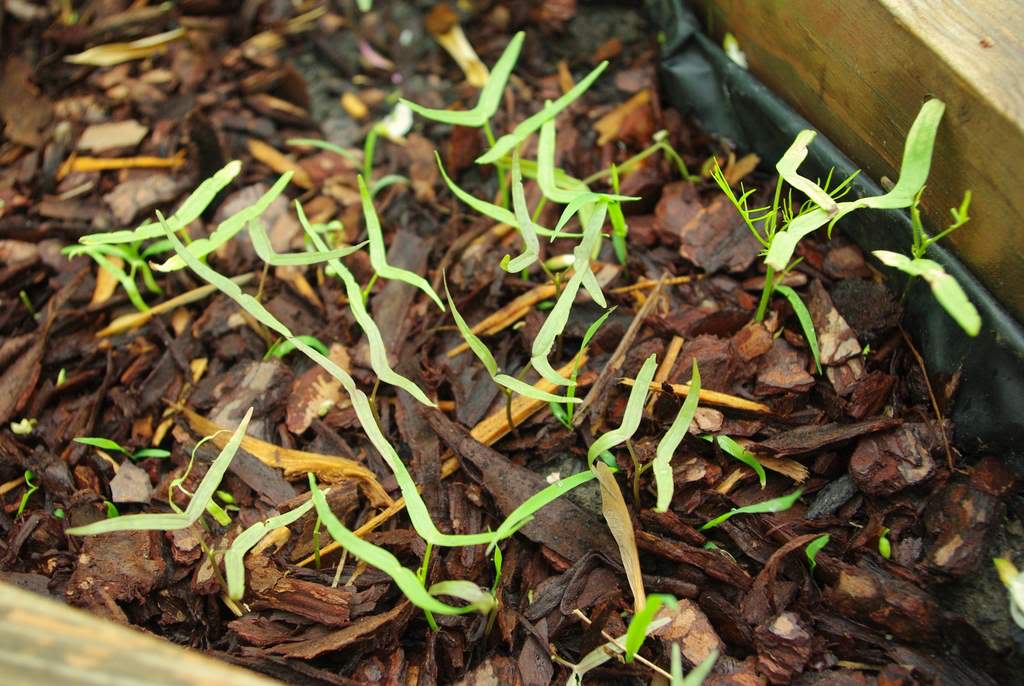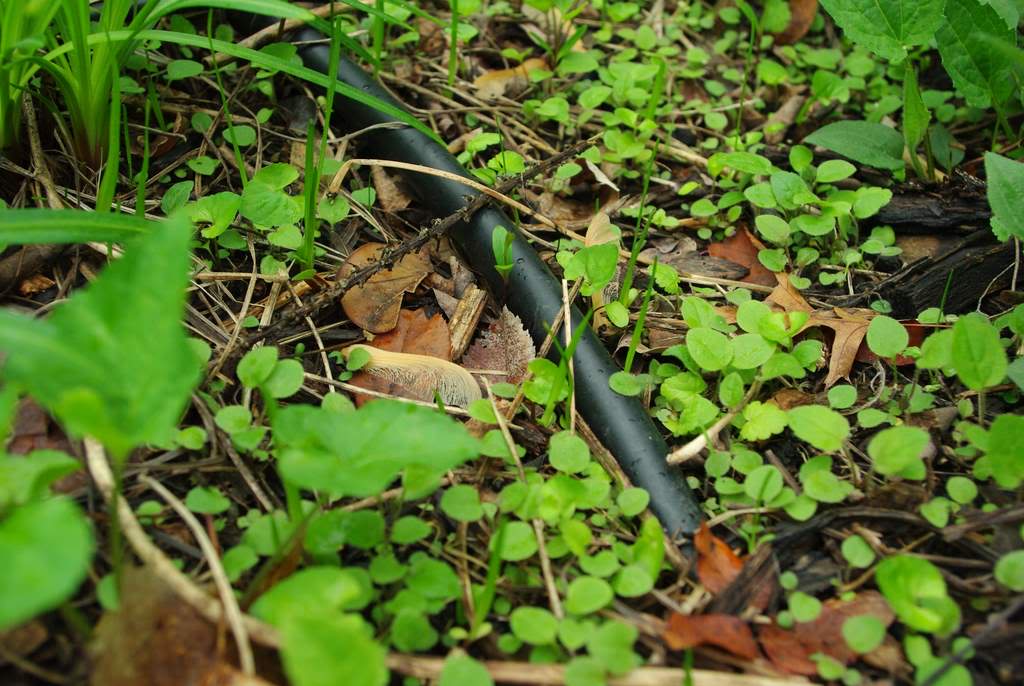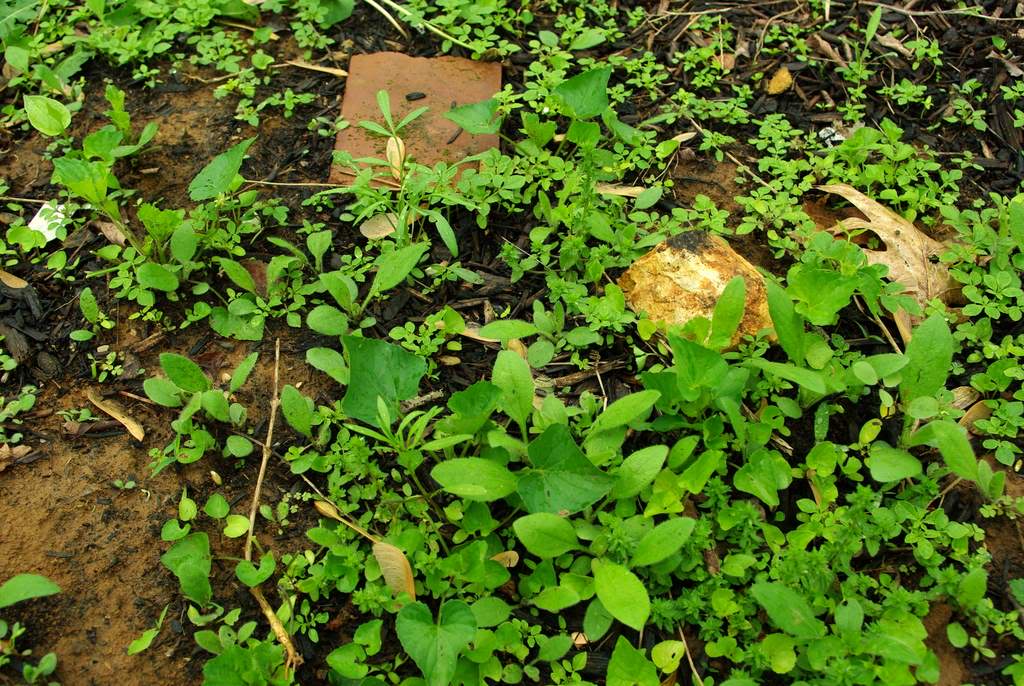Wild seedlings
I don't know about your garden, but I've got seedlings everywhere! Not just weeds either -- I've got plenty of seedlings from desirable plants. Plants that I probably want to save, perhaps to transplant, or maybe to leave where they are. It's important to recognize the plants you want to keep while they're small, otherwise you'll end up yanking them out with all of the weeds. Sometimes it's simple, like when you're growing in pots, as is the case with this red plains coreopsis:
Or this Agastache foeniculum growing in a different pot (along with some weeds):
The cypress vine seedlings are growing in the triangle bed and are quite distinctive:
It's easy to identify the cypress vine seedlings, and I'll be seeing plenty of these before too long. The cool thing is it's really easy to tell the vines that will flower red from the ones that will produce white flowers, even at this tiny size -- the red-flowered plants have darker leaves and stems, with a slight reddish tint. That makes it easy to choose which plants to save and which to pull!
When you have many types of seedlings growing together in the same bed, that's when it gets interesting. Take this for example:
Besides some violet seedlings in there (weeds!) there are liatris ("gayfeather"), rudbeckia ("black-eyed susan"), and callirhoe involucrata ("poppy mallow") all mixed in here. Here's a closer look:
The liatris seedlings look like blades of grass, the poppy mallow seedlings have round leaves with jagged edges ("serrated") and the rest are rudbeckia -- the smooth-edged leaves. I'm not quite sure if they Rudbeckia fulgida 'Goldsturm' or Rudbeckia triloba -- both of those were in this bed.
Here's the biggest challenge I have as far as seedlings goes: my wildflower and mixed annual bed:
A couple of weeks ago I thought this was all just violet seedlings, but now I can see Rudbeckia hirta, Cleome (or "spider flower"), and plains coreopsis. After I did a bit of weeding and removed the violets you can see the desirable plants better:
The coreopsis is the tall one, the cleome has leaves with multiple parts (three lobes right now, but it will eventually be five or more), and the rudbeckia has the larger single leaves that look a bit fuzzy:
Um, there are a lot of cleome seedlings in this bed. I've forgotten how much seed it produces! This bed will be interesting: besides having several more types of flower seedlings growing, it gets frequented by the deer and the rabbits. I'm not going to put any fence around this bed, as I want to see what happens. I'm mentally prepared for all of the best plants to be chomped right before they start blooming, but my plan is to let so much grow here that they couldn't possibly eat it all. (Note that the deer have already chomped the top of an early-sprouting bachelor button or "cornflower". That will just make the plant bushier and produce more flowers. Thank you deer!)
The point I want to make today is pay attention to any plants you start from seed. Learning what they look like (and smell like, if they have a distinctive aroma when crushed) will help you avoid throwing them on the compost pile with the rest of the weed seedlings.
If you're anything like me in the garden, you probably hate getting rid of any plants at all, regardless of how small they are.











